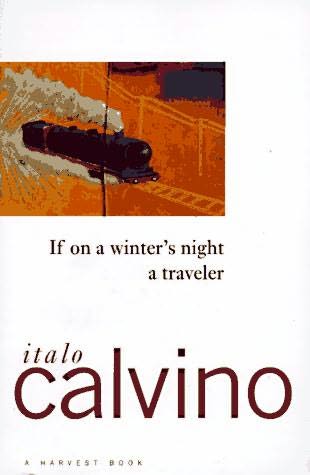Class Summary by Natalya Gornopolskaya
February 26th 2009
On this day in class we were given a very informational introductory lesson on a new book which we will be starting, entitled “If on a winter’s night a traveler” by Italo Calvino. We started by discussing some interesting background information on the author, Italo Calvino. Italo Calvino was born in 1923, in Havana, Cuba. He is of Cuban-Italian descent. During World War II, he enrolled in the University of Turin for Agricultural Studies and then transferred to the University of Florence in 1943. He believed in the ideas of Communism and even joined a clandestine organization called the Garibaldi Brigades. While aiding this Communist group, Calvino served during the war in the Maritime Alps. It is said that he achieved some of his greatest inspirations during his wartime efforts which instilled in him a true dedication towards Communism. He then returned to Turin and geared his newfound ambitions towards literature. His first published work was a short story called “Andato al commando” (Gone to Headquarters), which was published in a Turin University magazine. His writings have been described as Postmodernist because as a writer Calvino was very in tune with the ages.
We then looked into the sequence as to how literary storytelling evolved. First there was the Epic era, during which stories were performed and students had to memorize texts written in a mnemonic rhyming scheme. Fables dominated as automorphic tales with morals that involved aspects of heroism. Novels then became the prominent literary framework of our society. There have been many works comprised of a play on the structure of the novel. This innovative creativity includes novels written within a novel, as well as novels created with multiplying layers.
The lesson progressed as we moved on to the critical analysis of the Reader’s response. We opened with a quote by Aristotle; “A whole (story) is that which has a beginning, a middle, and an end”. To me this quote conveys that each story is molded into what it truly is by those who read it. Today stories are regarded as boundless entities, as sometimes seen in teleology; the reader pieces together an ending in mind. Nothing is fixed in the literal realms of text and in order to be effective readers we cannot holistically substantiate from text alone. A good reader must place emphasis on interpreting various styles in coexistence with experience. Some readers may even search for a hidden meaning in literature which inspires fruit for critical thought and questions. Other emphasis is placed on how texts govern reader responses while containing gaps that a reader creatively fills. To drive this point home an implied reader is one who is driven by the text and a true reader is one who interprets based on experience. Therefore in order to gain true insight and enjoyment out of a novel such as “If on a winter’s night a traveler”, we must strive to become true readers and look beyond the constraints of simple text.
The blog for SUNY Binghamton's Spring'09 COLI 214B 02 Literature and Society Class. Chapter summaries, analyses and discussion of prescribed texts written by students.
Monday, March 2, 2009
Subscribe to:
Post Comments (Atom)






No comments:
Post a Comment